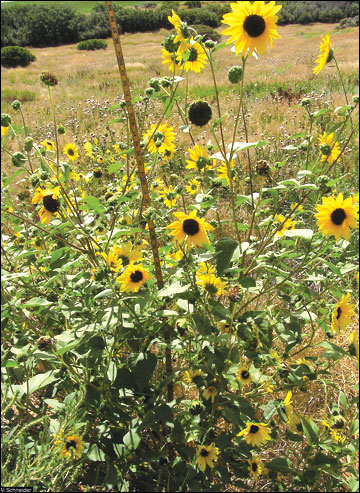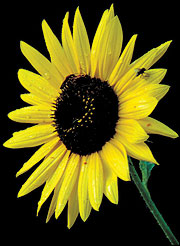Sunflower
- Helianthus spp.
Forb
Unlike domestic varieties, wild sunflowers typically bear multiple flower heads per plant.
©Al Schneider, USDA-NRCS Plants Database
Description
This large group of plants exhibits a variety of characteristics, but most of the commonly encountered species have triangular to lanceolate leaves, rough leaf surfaces and conspicuous yellow flowers. Seeds of wild sunflower species have the same shape but are smaller than sunflower seeds purchased for birdseed or human consumption. Unlike most garden-variety or commercially grown sunflowers, most of the wild sunflowers in the Midwest bear multiple flowers. Sunflowers thrive in disturbed areas such as crop fields, roadsides, overgrazed pastures and field edges, as well as woodlands, prairies, glades and old fields. They are commonly planted in food plot mixes. Native perennial species should be included in native grass plantings.
Bloom period
July to October
Use by bobwhites
Bobwhites readily consume sunflower seeds, though the seeds of several species quickly rot on the ground. Seeds have a high oil content, making them a valuable energy source. Dense stands are used as brood cover.





